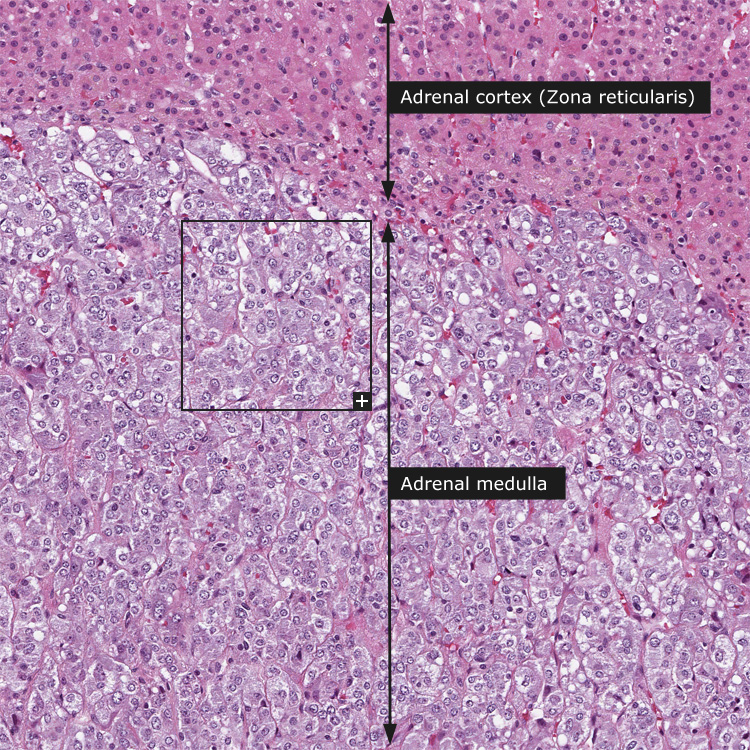Adrenal gland

Adrenal gland
The adrenal glands are small endocrine glands with triangular to semi lunar shape. They are located right on top of the kidneys and are enveloped by a fibrous capsule surrounded by adipose tissue. Each gland has two parts, the adrenal cortex and the adrenal medulla.
The adrenal cortex secretes corticosteroids and androgens and consists of three layers, namely zona glomerulosa, zona fasciculata and zona reticularis.
The cells of the outermost layer, zona glomerulosa, produces aldosterone which function in the control of blood pressure. The cells are cuboidal to columnar in shape and arranged in rounded clumps, glomeruli, surrounded by sinusoid capillaries. The round cell nucleus is darkly stained and the cytoplasm is acidophilic.
The middle zona fasciculata is the broadest layer and consists of cells that produce glucocorticoids. The cells are arranged in parallel cords, surrounded by sinusoid capillaries. The shapes of the cells are cuboidal or polygonal with a poorly stained cytoplasm. Within the cells lipid droplets are seen, giving the cells a foamy appearance. The nucleus is round and darkly stained.
The inner zona reticularis consists of cells arranged in anastomosing cords, giving it a reticular pattern. These cells produce weak androgens and some glucocorticoids. The cells of the zona reticularis are smaller and darker stained than the ones in zona fasciculata.
The adrenal medulla is made up of nervous tissue and secretes catecholamines in response to neuronal signals. The cells of the adrenal medulla are innervated by presynaptic sympathetic neurons and release the catecholamines norepinephrine and epinephrine on direct response to nerve impulses. These chromaffin cells in the medulla are lightly stained basophilic cells that are arranged in ovoid clusters in close proximity to capillaries.
|